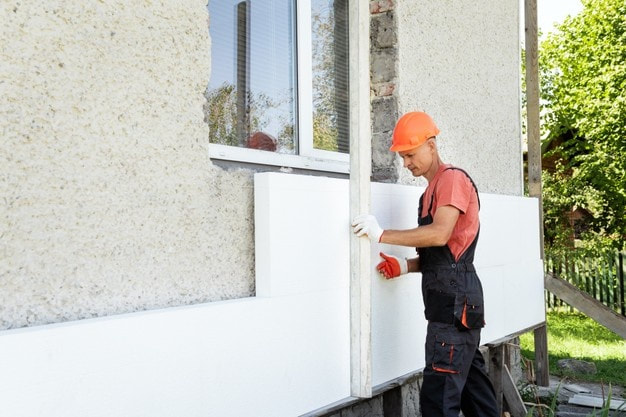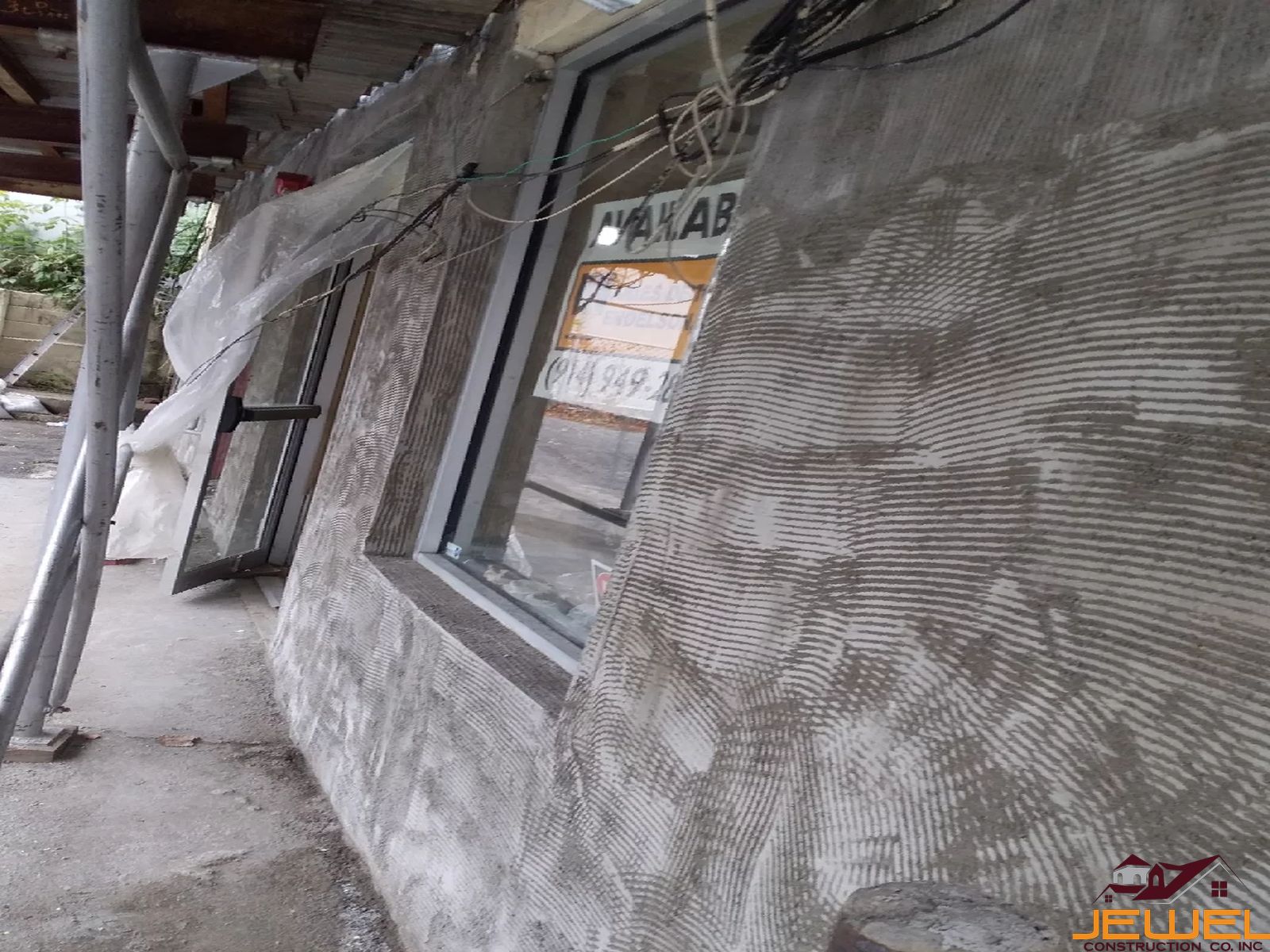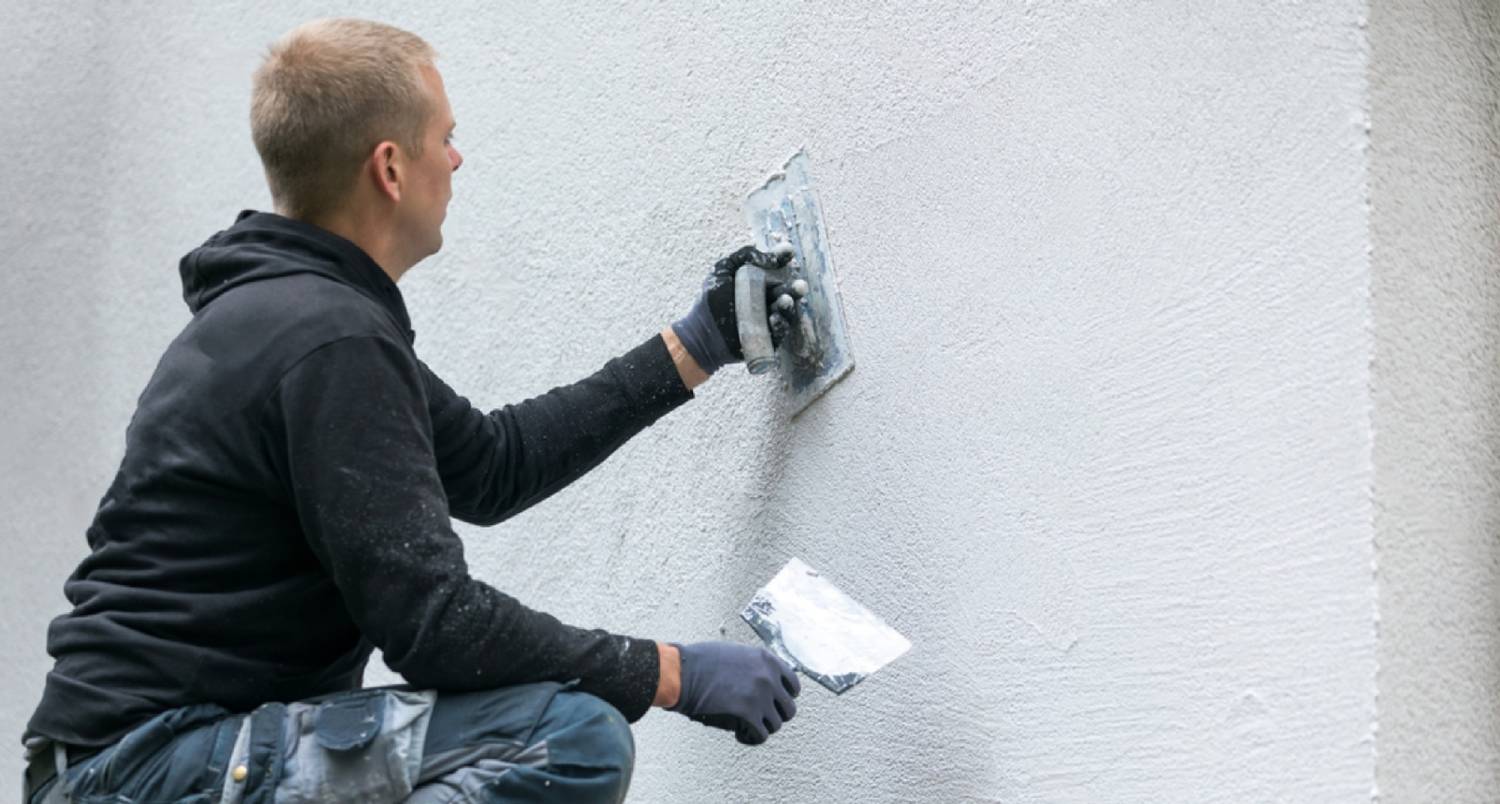The Ultimate Guide to Selecting an Experienced Stucco Contractor for Your Requirements
The Ultimate Guide to Selecting an Experienced Stucco Contractor for Your Requirements
Blog Article
Discovering the Convenience of Stucco in Modern Architecture
Stucco has actually long been acknowledged for its visual appeal and adaptability, yet its role in modern style warrants a better assessment. This material, traditionally significant in different architectural movements, now offers as a flexible solution that enhances both the aesthetic and practical aspects of modern structures. By discovering its cutting-edge applications, from striking exteriors to energy-efficient styles, one can value exactly how stucco is redefining the borders of building expression. This discussion will certainly discover not just its transformative capacity but additionally the challenges it encounters in a progressing industry.
Historical Value of Stucco
The historical significance of stucco is extensive, as it has actually played an essential duty in architectural techniques across different societies for centuries. Coming from ancient civilizations, stucco was used by the Egyptians and Greeks as a resilient and functional finish for both exterior and interior surfaces. Its versatility to different climates and ability to simulate more expensive products made it a popular selection.
In the Roman era, stucco became a primary ornamental component, made use of thoroughly in public structures, suites, and temples. The Romans refined the application techniques, permitting complex designs and relief sculptures. During the Renaissance, stucco experienced a revival, particularly in Italy, where it was employed in ornamental information and sophisticated exteriors, showcasing the creativity of the period.

Modern Applications in Layout
Stucco has located restored importance in modern design because of its versatility and aesthetic allure (stucco contractor). This traditional material is progressively made use of in modern layout, bridging the space between contemporary and traditional visual appeals. Designers and designers value stucco for its flexibility, permitting it to be used in different designs-- from minimal structures to elaborate Mediterranean designs
In property tasks, stucco provides a clean, smooth surface that boosts the aesthetic cohesion of exteriors. Its capacity to adapt different shapes and surfaces makes it an excellent choice for both new constructions and remodelling jobs. Additionally, stucco's sturdiness and reduced maintenance needs add to its expanding appeal in city setups, where durable products are essential.
Commercial applications have actually additionally accepted stucco, with lots of organizations selecting this product to produce inviting and distinctive storefronts. Using stucco in public structures, such as colleges and recreation center, showcases its possibility for producing visually enticing atmospheres while offering outstanding insulation properties.
Shade and Texture Advancements
Checking out color and appearance developments in stucco has actually opened new methods for designers and architects, boosting the material's aesthetic impact in modern construction. Current improvements in pigment technology have actually enabled a broader spectrum of shades, enabling developers to produce striking exteriors that incorporate seamlessly with their surroundings or stick out as strong architectural declarations. This flexibility in shade choice offers engineers the capacity to stimulate particular psychological reactions and integrate with local visual appeals.
Appearance developments have actually similarly changed stucco applications. Methods such as shoveling, spraying, and stamping have actually brought about varied surface finishes, varying from smooth and refined to sturdy and responsive. These variations not only add to the building's personality but likewise play a critical function in light communication, enhancing the visual deepness and dimensionality of surfaces.
In addition, the introduction of synthetic stucco options has actually broadened design possibilities, using boosted sturdiness and climate resistance while maintaining aesthetic charm. As engineers remain to trying out innovative color palettes and textured finishes, stucco remains a crucial element in contemporary design, showcasing the material's flexibility and classic importance in modern design.
Sustainability and Power Efficiency
Technologies in shade and appearance have not just enhanced the aesthetic appeal of stucco but also led the way for higher emphasis on sustainability and power effectiveness in modern-day architecture. As environmental problems come to be significantly popular, the building and construction industry is transforming its attention to materials that contribute positively to ecological equilibrium.
Stucco, made up primarily of natural products such as lime, cement, and sand, supplies a lasting option to even more resource-intensive structure products. Its durability and toughness minimize the requirement for this hyperlink regular replacements, thus minimizing waste and source usage with time. Contemporary stucco formulations commonly include energy-efficient additives that boost insulation buildings, minimizing heating and air conditioning costs for buildings.
The reflective top qualities of stucco can also be crafted to reduce heat absorption, adding to cooler indoor atmospheres and less dependence on synthetic environment control systems. By promoting power conservation and minimizing the carbon footprint of frameworks, stucco aligns with the principles of lasting architecture. As home builders and engineers take on ingenious techniques and eco-friendly methods, stucco sticks out as a responsible and versatile option in modern layout.

Situation Research Studies of Stucco Projects
The adaptability of stucco as a building product is exhibited in numerous effective architectural tasks that highlight its useful and visual advantages. One noteworthy example is the remodelling of the historical Casa de la Guerra in Santa Barbara, California. Using stucco not only protected the structure's Spanish Colonial Rebirth style yet likewise enhanced its longevity and weather resistance, making sure durability while keeping architectural integrity.
One more engaging situation is the contemporary property project, the Cactus Residence in Scottsdale, Arizona. stucco contractor. This striking home functions a smooth stucco surface that harmonizes with the bordering desert landscape. The stucco's light color shows warmth, adding to energy performance, while the textured surface areas include visual passion
Furthermore, the Kings Cross redevelopment in see here London showcases the versatility of stucco in metropolitan settings. The application of stucco on contemporary mixed-use buildings produces a cohesive aesthetic that values historic context while welcoming contemporary design principles.
These case research studies show exactly how stucco can offer various architectural objectives, from preservation and power efficiency to aesthetic enhancement, making it a functional option in modern design.
Verdict
 In verdict, stucco's historic relevance and contemporary flexibility make it a beneficial material in contemporary design. discover this As demonstrated through different situation studies, stucco proceeds to play a critical duty in shaping the architectural landscape of the modern-day period.
In verdict, stucco's historic relevance and contemporary flexibility make it a beneficial material in contemporary design. discover this As demonstrated through different situation studies, stucco proceeds to play a critical duty in shaping the architectural landscape of the modern-day period.
In final thought, stucco's historical value and modern-day convenience make it a valuable material in modern architecture.
Report this page